Note
Do you have any tips on how to plan and outline a large multi-chaptered story?
Yes!
This is what I do:
First just write down your idea. Just the sentence that describes the main plot.
Second, what needs to happen? Usually on your first sentence you’ve already introduced a problem. For example, if your main charatcer enters the plot on false pretenses then that has to be revealed. If red riding hood enters the woods, she has to meet the wolf. That sort of thing.
Next, list out what you can on so, but statements. “Grandmother is sick SO red riding hood brings her goodies BUT the woods is infested with wolves SO she sticks to the path BUT...” and so on. You’ll find that’s an easy way to build up some plot ideas.
Next is characters. What arc do you want them to have? Write down how your character starts, how they end, and three points in between that get them there. How does this change the plot? Here’s how to do that.
Fifth is organizing your plot as much as you can. I use this method but it really depends on you.
Next... just write as much as you can. Set a word minimum for every day. Don’t think about editing. Don’t think about plot holes. First draft is just writing it down.
99 notes
·
View notes
Photo

This is the piece I made for the @thezinezone‘s Strange Constellations Zine.
I loved looking for details to add. Also, I always wanted to draw Monmouth and this was the perfect chance.
4K notes
·
View notes
Text
Fantasy Wardrobe: Historical Gowns Part 2
Fashion is one of my favourite worldbuilding components and choosing which way I want characters to look, is one part of research that is more fun than work. The use of different styles give each culture a defined feel and could act as a symbol of all kinds of lands in your WIP. Since it is your WIP, you can play with different elements of the gowns and pay fast and loose with the styles.
Well, I decided to expand one of the most popular posts I have done on here. Here I have explored more Gowns of history, some interesting styles to consider for your WIP. You can find part 1 here
Sari


The Sari is the traditional dress of the women of India. The sari is an unstitched drape of cloth wrapped around the waist and over one shoulder. The sari as an entire collection consisted of:
Choli: This the blouse part of the sari. It was usually cut to fit the body close, baring the middrift with a low neck and shortened sleeves.
Lehnga or langa, or Ghagra or gagra, Chaniya, Pavadai and Lacha: The Lehnga is a form of full ankle-length skirt worn by women in India. The skirt is usually long and thickly embroidered and decorated. Though it has become outdated today, it remains one of the most recognisable garments in the world. It was worn, secured at the waist to leave the lower back and midriff bare. Lehenga are usually embroidered with certain patterns which dictated locality in some regions of India.
Dupatta: The dupatta is a long scarf-like drape of fabric, worn like a shawl.
Stola

The stola was the traditional garment of Roman women. The stola, usually made of wool but sometimes of linen, was worn as a symbol of matronly behaviour and as a symbol of a good Roman woman. (women had worn togas before but it had become associated with prostitution so they stopped). The stola was usually made of linen or wool or even silk depending on the wearer. The stola was worn over a shorter tunic and was often sleeveless though by the Byzantine era, the women began adopting longer sleeves.
Tunic

The tunic is perhaps the most recoccurring women's garment in history. The tunic was rather like a long t-shirt, worn either sleeveless, with long sleeves or short sleeved. Tunics could reach the ground or fell to the knee. Tunics were worn in ancient times straight up to modern times.
Kimono

The kimono is the traditional dress of Japan. The kimono is typically a T-shaped, with long squarish sleeves, at the front of the wearer (the left side wrapped over the right side unless the wearer is dead) The kimono is a layered garment worn with a slew of accessories such as the obi (the decorative belt worn to keep the kimono closed). The kimono is a complicated garment with each piece having its own special term: Dōura ( the upper lining of a kimono), Hakkake ( the lower lining of a kimono), Eri (the collar), fuki (the hem), Furi (the hang of the sleeve) Maemigoro ( the front panels), Miyatsukuchi (the opening of the sleeve), Okumi (the overlapping front panel), Sode (sleeve), Sodeguchi (opening of the sleeve), Susomawashi (lower lining) Tamoto (pouch in the sleeve), Tomoeri (over-collar), Uraeri (the inner collar), Ushiromigoro (the back panels).
Dashiki

The dashiki or Java is a popular garment in Africa and some parts of Indonesia. The dashiki is rather like a large t-shirt, loose-fitted and pulled over the head. The dashiki could be as plain or as decorated as the wearer pleases, meaning it was worn casually and formally.
Kaftan
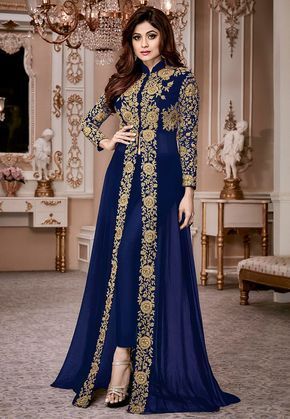
The kaftan was and remains a popular garment worn by many cultures spanning Eastern Europe to the Middle East and Asia. The kaftan was often long-sleeved, made of linen, silk or cotton and worn with sashes. The kaftan were often status symbols sometimes associated with the upper class and royalty.
Deel

The deel is the traditional dress of the nomadic Mongolian and Asian tribes. The deel is like long coat, fastened at the front with clasps or pavings to pull each side over the wearer's body. The fastenings are commonly placed at the shoulder, armpit and neckline. The deel would be fastened with a sash.
Hanfu

The Hanfu was the traditional style of the Han dynasty of China. The main style of the Hanfu style of dressing consisted of a long robe or shirt as well as a traditionally pleated skirt. The Hanfu consisted of many pieces l again each with their own terminology. Yi (the open collar garment), Ru (Open collar shirt), Shan (open collar shirt or jacket worn over the yi), Qun/chang (the skirt), Ku (loose trousers).
Peplos
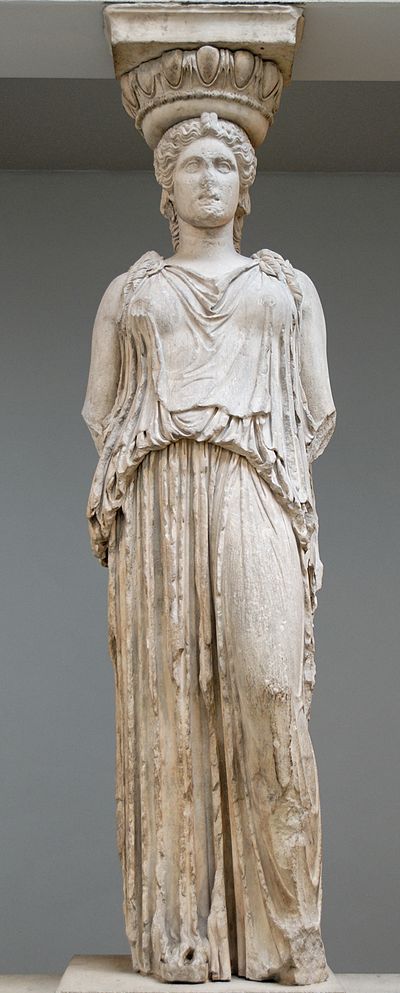
The Peplos a long, slender gown of the Ancient Greeks. The Peplos was often folded so to drape at the waist, caught by a sash. The garment was held in place by broaches at the shoulder.
2K notes
·
View notes
Text
Tip Tuesday | Developing Realistic Characteristics

Hello, hello peeps! Hope everyone is staying safe and healthy! I am going to go back to more writing related tips this week. I am going to talk about developing realistic characteristics for your characters. Just a few tips and tricks to help you out with your OCs and Reader inserts.
1. Don’t make a list of traits for your characters. I know, I know, traditional advice is create a character sheet for your OCs, but hear me out. When you make a list of characteristics and/or traits, you can have the tendency to try to fit those traits into your story, which can feel forced. Instead allow the traits to be introduced in a more organic fashion. Drop them in like little jewels throughout your story.
2. Based traits on real people. Pay attention to the people around you. Use some of those quirks in your own characters. Mix and match. Pick some positive and negative traits. One of my most favorite stories are my Meeting Your Heroes stories, the reader in their is very self-insert. So a lot of the characteristics/details are based roughly on me. I think those traits have made that story so enjoyable to others.
3. Give people real flaws. Everyone has flaws, like real life altering flaws. Perhaps they are notorious for avoiding difficult situations. Or they are clumsy. Or quick to anger. Make sure all your characters have honest to goodness flaws (not those surface flaws that are actually positive traits!). Make them bad at something. Make them struggle, suffer! Make them human!!!
4. Give your characters a unique vocabulary. Another great way to breathe life into your characters. Give them catchphrases, slang, etc. This can help determine a person’s age, nationality, education, etc. It also helps make your dialogue feel more naturally.
And there you go! I hope this helps you develop some well rounded characters. Until next week!
2K notes
·
View notes
Note
Can you give tips on how to write slow burn? Thanks in advance!
I am going to be very honest.
I’ve never written a slow burn in my life. I’m writing (mostly just planning so far) one now for the very first time. It’s very exciting.
What I’ve done is:
Interrupted almost kisses. They shall not even kiss until maybe the very last page.
Enemies to lovers so they have to build trust first.
Have them bond but never think the other one likes them back.
Always a reason not to confess.
Halfway through one will be hurt and the other will care a lot. At the end this is switched. We like that good angst.
Lots of light flirting.
Everyone knows they’re like each other (except for them.)
It helps when there is a compelling reason why they can’t be together, not just “they won’t confess cuz drama.” If not enemies, have their love conflict with their goals in the story.
Push them together and then push them apart. Over and over again. “They almost confess but then- something is revealed.” “They almost kiss but then- they’re reminded why they can’t be together.” This is a very fine line to walk because you run the risk of aggravating your reader is it’s not a good reason.
2K notes
·
View notes
Text
Open up your manuscript.
Search for “there is” or “there was.”
Find all the description or action that starts with “there” and change it.
“There is a strike of lightning” becomes “lightning strikes the sky.”
“There is panic building in his chest” becomes “panic builds in his chest.”
Helps declump the writing
16K notes
·
View notes
Text
I’ve finally finished reading the Tyon Collective series by Susan M. MacDonald, and I wanted to record my initial thoughts about finishing it somewhere.
I’m honestly not entirely sure how I feel about the series as a whole, but I know part of that is due to the fact that it didn’t follow my expectations of it and that’s not really something I can fault it for. My favourite of the bunch is definitely the first novel, Edge of Time, and I think that’s partially because it feels so different from the other two instalments - which makes sense in a way as books two and three technically take place in a separate timeline. Time of Treason suffered a bit too much from middle book syndrome, in my opinion, but Treason’s Edge was a pretty good final act.
I’m going to be more specific from here on out in terms of what I did and did not like, but I will do my best to avoid giving blatant spoilers. That said, some minor ones might slip through.
I really enjoyed Alec and Riley as characters, and this series hit that sweet spot of having chapters that switch between the points of view of different characters where I was always invested in following that chapter’s narrator. Darius was also a high point, and I enjoyed myself the most when the three of them were interacting with one another - which is something that I was expecting to see a lot more of than what actually happened as the books went on. The separation of them as a group wasn’t necessarily a bad thing - some of my favourite scenes involved Alec being isolated from both Riley and Darius - but I was hoping for more of it regardless.
The writing improved as the series went on, which is not to say that it was at all bad in Edge of Time (I still think it’s a great first book in a series, and it’s also, as previously stated, my favourite), but the dialogue, pacing, and atmosphere became more effective in each book. There are quite a few scenes in Treason’s Edge that were much more distressing than the characters themselves knew, yet the lack of knowledge on the part of the narrator didn’t lessen that distress at all.
There were a few minor things that disappointed me such as the lack of development with Peter (who was really interesting to me), the aforementioned decrease in Alec and Riley and Darius as a trio, and I didn’t think the character of Keery really added enough for him to stick around for as long as he did, but overall the series was still an enjoyable read. I’m curious to see what it would be like to re-read these books with all of the reveals of the final novel in mind.
All of that being said, I’m still having trouble deciding if I like the series as a cohesive whole. As individual books they all have their own strengths and weaknesses, but when taking them into account as one full story I’m not sure how to feel, and I don’t know how much of my indecisiveness here boils down to what was actually written or how it compares to the story I thought was going to occur. I can’t decipher how much of my feelings boil down to assuming I knew the general gist of where the series was going only to be proven wrong.
Regardless of my current inability to decide where I stand on these books as one cohesive story, it was still a very fun and interesting series to read and it has left me with a lot to think about. I might even have to re-read it all in order to fully figure out all of my opinions.
0 notes
Photo

“There are no weeds, and no worthless men. There are only bad farmers.”
912 notes
·
View notes
Photo

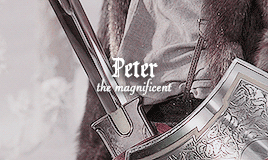
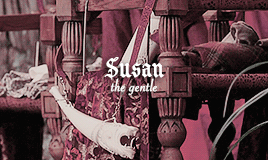
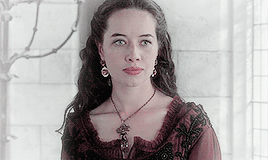




Once there were four children whose names were Peter, Susan, Edmund and Lucy.
4K notes
·
View notes
Text
why you should keep writing your story
because it’s a puzzle no one else will ever arrange the same way as you.
because there are ideas that simply won’t come to you until you write down the wrong words.
because all the bad scenes are the bones of the wonderful scenes.
because someone will love it: someone will read it once, and twice, and thrice; someone will ramble to you about the complexity of it; someone will doodle your characters out of love; someone will find it in exactly what they were looking for with or without knowing it.
because they have things to say, your characters. they’ve told you all those secrets and they have more to tell you, if you will listen.
because you love it even when you don’t; even when it drives you mad or when it accidentally turns into apathy; even when you think you’re doing it all wrong; you love it, and it loves you back.
because you can get a treasure even from things that go wrong; because if a story crumbles down you can build a shinier one on the same spot; because you won’t know where it will take you until it takes you there.
52K notes
·
View notes
Quote
You should write because you love the shape of stories and sentences and the creation of different words on a page. Writing comes from reading, and reading is the finest teacher of how to write.
Annie Proulx (via writingdotcoffee)
451 notes
·
View notes
Photo
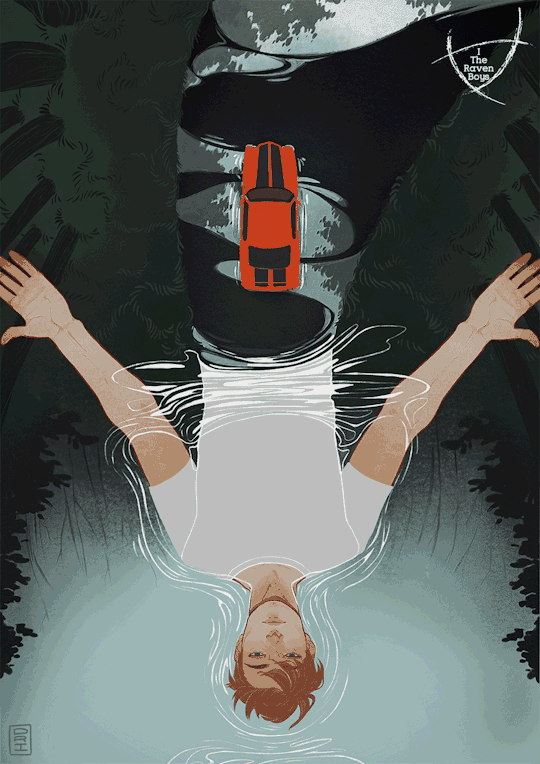

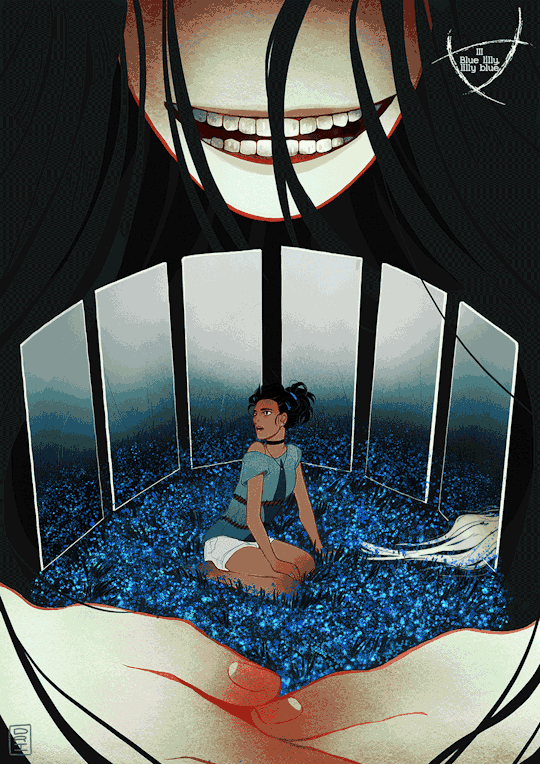

The Raven Cycle fake covers. Animated because in my dreams book covers move <3
27K notes
·
View notes
Text
Fantasy Guide to Make-Up and Cosmetics

If I am to be completely honest with you all, I know nothing about make-up. Those little brushes and endless sponges mean nothing to me except the fact that they are really soft and sometimes shiny. I don't wear makeup so you can imagine how useless I am at modern make-up.
However, history is my jam and I know about what make-up they use centuries ago. So never fear @theflyingravenbird I got you.
Ingredients and Applications

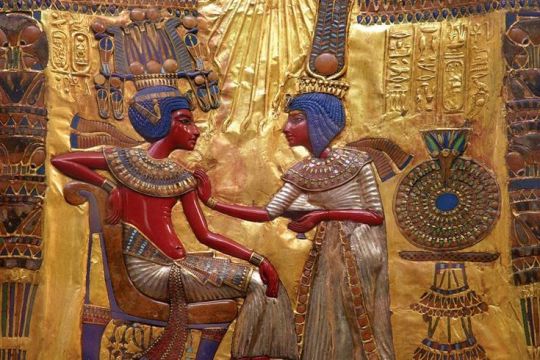
Make-up and cosmetics of the past were usually sourced from natural ingredients. The more difficult the ingredients were the more expensive the cosmetic was. Natural dies such as red ochre and berries were used to stain lips or colour powder to use as blusher to add colour to the lips. For examples:
Geishas of Japan are probably the most recognizable make-up wearers in the world. Historically and in some more traditional okiyas, the geishas painted their faces with rice powder to give them that unbroken, white complexion. A popular recipe for their crimson lipsticks involved extracting pigment from crushed safflower petals.
Henna paste made from the eponymous plant can be used as hair dye and to trace designs on the feet and hands.
Kohl is a black powder that is famous for its popularity in Egyptian Cultures and even the Persian Empire. Kohl lines the eyes like modern eyeliners and is found when one grounds stibnite. Kohl actually had the luck of preventing eye infections which no doubt helped in the climate of Egypt and beyond.
The Phoenicians used powdered metals of gold, silver and other metals to dust their faces. This is reputably thought to denote their wealthy status.
Rouge or blusher has had numerous recipes throughout history. The Ancient Egyptians made rouge from red ochre and animal fat. The Romans made their rouge from lead and cinnabar, which sounds about as bad for you as you think it does. The Ancient Greeks made it from pressed mulberries or other fruits such as beet and strawberries. The Ancient Chinese made rouge from extracts of coloured flowers.
Ancient Chinese cultures used a mixture of gumarabic, gelatin, beeswax, and eggs to stain their nails. The colors were often used to denote social class. Gold and silver was worn by royalty or black and red. The lower classes were not prohibited to wear bright colours.
Lipstick has also a few recipes. Egyptians used pounded carmine, a kind of insect, to smear on their lips. Other ancient civilizations used red ochre. Vermilion (though toxic) was also used, along with crushed flowers with red pigment mixed with beeswax during the Elizabethan period.
During the late Elizabeth and then again in the Baroque period, women and some men began to paint their faces with white powder. The layer of white lead and vinegar, or ceruse was popular for tears despite the hair loss and death it caused.
Make Up Tools

Powderpuffs: the powderpuff was a pad of soft material meant to apply powder to one's face. They were made of feathers, cotton or sheep's fleece.
Brushes: Brushes have been been around for ever. They have been found in some of the earliest Egyptian tombs. The brushes were often made from animal hair with wooden or more expensive handles.
Pots of pigment, scents and ointments: Some early tombs excavated from ancient civilizations have included what amounts to a palette (thank you lil sis for that word). The pigments in the pots would be very expensive. Ointments and balms have also been found. Perfumes were very popular in antiquity and made a recurrence in Europe after the Crusades (which helped since some of the make up smelled awful).
Make Up and Social standing

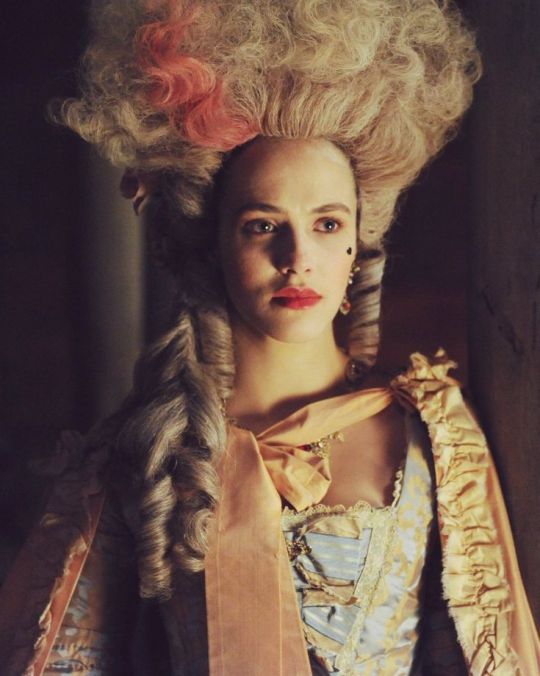
Though make up is rather popular now, it had a rather uncertain rise to popularity.
Most Ancient civilizations wore some kind of cosmetic. The overuse of cosmetics in ancient times was frowned on as prostitutes and actors often wore dramatic make up however the elite often smeared themselves with powders to make them paler and redden their cheeks.
In the Middle Ages, makeup had a dual reputation. The Church frowned on it because it was again popular with prostitutes and actors but it was a common consensus that if the woman was scarred from smallpox or some other disease she was excused from being labelled as vain.
In the late Elizabethan period, theatres were getting more popular and as was makeup. Actors began wearing make up more frequently as did the elite. Elizabeth I herself was infamous for her milk-white skin. Make up became more sociably acceptable among the rich and noble at this point.
The 1700s probably saw the height of make up madness. Both women and men of the elite powdered themselves with white lead paint. They rouged their cheeks to high pigment and stuck small dots of felt to cover blemishes. The commons began to poke fun at the elite's strange obsession with looking like they've lost all their blood. Dandies and painted noblewomen were often poked fun at by pamphlets and satirical cartoons.
The Victorians frowned on make up, thinking it garish and common. Queen Victoria herself denounced make up as uncouth which lead the elite to abandon it in droves. However, most women prized a clear complexion so there was a lot of secret make-up-ing going on.
During the Edwardian period and the 1920s, make up began to get more popular. Older more respectable women began trying makeup to fresh their complexion. The younger generations began to experiment with makeup leading to the infamous smokey eye look.
861 notes
·
View notes
Photo




And I really hope those four guys would bond because one, it would make the fifteen months go a lot quicker if everybody was friendly and got along, but also for the film I knew that having the hobbit sort of feeling that they really were connecting with something that was important for the movie. - Peter Jackson
3K notes
·
View notes
Text
Part of the reason I have a complicated emotional relationship with Javert is because— Javert is BAD. He is a BAD person
But adaptations often don’t understand why he’s bad, and make him bad for the wrong reasons.
In the book, Javert is bad because he’s a cop. He is the “Best Cop It is Possible to Be,” he’s honest and completely obedient to the law, and he’s TERRIBLE, because you can’t be “good” when you’re enforcing a system that is inherently cruel.
But like... in Les Mis 1998 Javert is portrayed as being an unusually evil person who just has a weird obsession with Valjean, unlike other cops, who are Good. Les Mis 1998 even adds a Good Cop side character who lets Valjean go free in Montreuil-sur-Mer, while joking with Valjean about how Javert is unusually evil and none of the other cops like him.
???????
And as I’ve ranted about a lot, BBC Les Mis Javert’s desire to enforce the law is portrayed as a good honorable quality, and there’s an entire precinct of “good cop” side characters who help him.....while BBC Javert’s actual “moral failing” is what Andrew Davies calls his “twisted love” for Valjean.
and I’m just like...eh? Javert is bad, yes!! But that’s noT WHY he’s bad. He’s not bad because he’s gay, he’s bad because he’s a cop. He’s not bad because he’s an unusually evil cop, he’s actually an unusually “good” cop— and being a “good cop” is why he’s bad and cruel!
Anyway....my problem with these adaptations isn’t that they make Javert a bad person, it’s that they completely misunderstand why he’s a bad person. They turn a critique of the police as a whole into “one guy was weirdly mean, and then he died and everything was fine”
21K notes
·
View notes
Text
Someone: hey, if you’re a writer, why don’t I ever see you writing?
Me, a writer who’s been daydreaming about three characters, two unwritten chapters, some scraps of dialogue, and a partial plot that still needs to be heated up in the microwave before it’s usable:
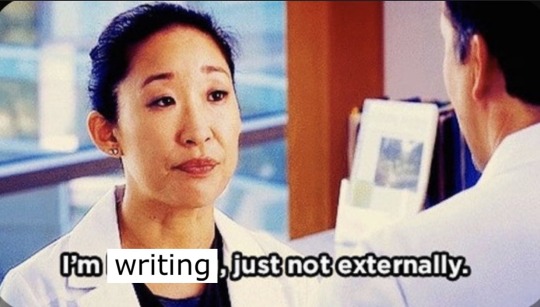
55K notes
·
View notes
